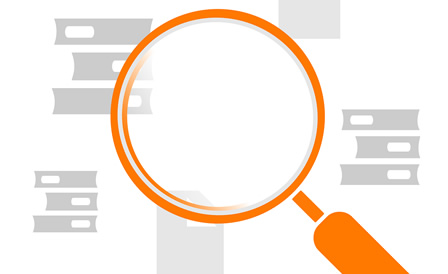Incidentes y Eventos Adversos Generados por Medicamentos Empleados en el Área de Radiología Convencional y Tomografía Computarizada Ingrid Mariana , Sánchez Usaquén
Material type: TextLanguage: Spa Publisher: Bogotá : Tecnológica Autónoma de Bogotá FAB, 2018Description: 30 p. CD-Room fase lllSubject(s): INCIDENTES | EVENTOS ADVERSOS | MEDIOS DE CONTRASTE | MEDICAMENTOS | RADIOLOGÍA CONVENCIONAL Y TCOther classification: T05.18 Dissertation note: Trabajo de Grado, 2018. Abstract: Se debe tener en cuenta que la seguridad del paciente es lo primordial al momento que ingresa a una institución de salud, debido a esto todo el personal de salud adquiere la responsabilidad de garantizar que esto se cumpla, por tal motivo los tecnólogos en radiología e imágenes diagnosticas deben tener los conocimientos básicos para identificar si se está presentando algún evento adverso o incidente al momento de administrar medios de contraste, y cómo reaccionar ante estas situaciones, dando una respuesta satisfactoria y evitando así daño a la salud o integridad del paciente; pero para conocer cómo debemos actuar ante un evento adverso o incidente primero que todo se debe tener claro la diferencia entre estos términos, su clasificación y los diferentes efectos que causan; ya que los tecnólogos en radiología están manipulando y administrando medios de contraste constantemente.
Por ende se decidió realizar una serie de encuestas a los tecnólogos en radiología convencional y tomografía computarizada con el fin de determinar que tantos conocimientos tenían ellos acerca de los incidentes y eventos adversos cuales son más frecuentes y cada cuánto se presenta dichas situaciones; también se les preguntó a los tecnólogos si ellos consideran que los tecnólogos en radiología e imágenes diagnosticas tiene los conocimientos básicos para brindar los primeros auxilios al momento en que se llegue a presentar un evento adverso. Según las repuestas suministradas concluimos que no tienen las bases suficientes para reaccionar ante un evento de estos, ya sea por qué en su formación académica no les dieron la suficiente información, o que en sus sitios de trabajo no reciben una capacitación adecuada para enfrentar y reaccionar ante los incidentes y eventos adversos.
Summary
It must be taken into account that patient safety is paramount when entering a health institution, due to this, all health personnel acquire the responsibility to ensure that this is fulfilled, for this reason the radiology and image technologists Diagnostics must have the basic knowledge to identify if an adverse event or incident is occurring at the time of administering contrast media, and how to react to these situations, giving a satisfactory response and thus avoiding harm to the health or integrity of the patient; but to know how we should act in the face of an adverse event or incident first of all, we must be clear about the difference between these terms, their classification and the different effects they cause; since radiology technologists are constantly manipulating and administering contrast medium.
Therefore, it was decided to conduct a series of surveys to technologists in conventional radiology and computed tomography in order to determine how much knowledge they had about the incidents and adverse events that are more frequent and how often such situations occur; The technologists were also asked if they believe that the radiology and diagnostic imaging technologists have the basic knowledge to provide first aid at the time when an adverse event occurs. According to the answers given, we conclude that they do not have the sufficient bases to react to an event of these, either because in their academic training they were not given enough information, or that in their work places they do not receive adequate training to face and react before incidents and adverse events.
TextLanguage: Spa Publisher: Bogotá : Tecnológica Autónoma de Bogotá FAB, 2018Description: 30 p. CD-Room fase lllSubject(s): INCIDENTES | EVENTOS ADVERSOS | MEDIOS DE CONTRASTE | MEDICAMENTOS | RADIOLOGÍA CONVENCIONAL Y TCOther classification: T05.18 Dissertation note: Trabajo de Grado, 2018. Abstract: Se debe tener en cuenta que la seguridad del paciente es lo primordial al momento que ingresa a una institución de salud, debido a esto todo el personal de salud adquiere la responsabilidad de garantizar que esto se cumpla, por tal motivo los tecnólogos en radiología e imágenes diagnosticas deben tener los conocimientos básicos para identificar si se está presentando algún evento adverso o incidente al momento de administrar medios de contraste, y cómo reaccionar ante estas situaciones, dando una respuesta satisfactoria y evitando así daño a la salud o integridad del paciente; pero para conocer cómo debemos actuar ante un evento adverso o incidente primero que todo se debe tener claro la diferencia entre estos términos, su clasificación y los diferentes efectos que causan; ya que los tecnólogos en radiología están manipulando y administrando medios de contraste constantemente.
Por ende se decidió realizar una serie de encuestas a los tecnólogos en radiología convencional y tomografía computarizada con el fin de determinar que tantos conocimientos tenían ellos acerca de los incidentes y eventos adversos cuales son más frecuentes y cada cuánto se presenta dichas situaciones; también se les preguntó a los tecnólogos si ellos consideran que los tecnólogos en radiología e imágenes diagnosticas tiene los conocimientos básicos para brindar los primeros auxilios al momento en que se llegue a presentar un evento adverso. Según las repuestas suministradas concluimos que no tienen las bases suficientes para reaccionar ante un evento de estos, ya sea por qué en su formación académica no les dieron la suficiente información, o que en sus sitios de trabajo no reciben una capacitación adecuada para enfrentar y reaccionar ante los incidentes y eventos adversos.
Summary
It must be taken into account that patient safety is paramount when entering a health institution, due to this, all health personnel acquire the responsibility to ensure that this is fulfilled, for this reason the radiology and image technologists Diagnostics must have the basic knowledge to identify if an adverse event or incident is occurring at the time of administering contrast media, and how to react to these situations, giving a satisfactory response and thus avoiding harm to the health or integrity of the patient; but to know how we should act in the face of an adverse event or incident first of all, we must be clear about the difference between these terms, their classification and the different effects they cause; since radiology technologists are constantly manipulating and administering contrast medium.
Therefore, it was decided to conduct a series of surveys to technologists in conventional radiology and computed tomography in order to determine how much knowledge they had about the incidents and adverse events that are more frequent and how often such situations occur; The technologists were also asked if they believe that the radiology and diagnostic imaging technologists have the basic knowledge to provide first aid at the time when an adverse event occurs. According to the answers given, we conclude that they do not have the sufficient bases to react to an event of these, either because in their academic training they were not given enough information, or that in their work places they do not receive adequate training to face and react before incidents and adverse events.
| Item type | Current location | Collection | Call number | Status | Notes | Date due | Barcode | Item holds |
|---|---|---|---|---|---|---|---|---|
 Trabajos de Grado
Trabajos de Grado
|
Biblioteca UDES- Bogotá Audiovisual | Colección de Monografías y Trabajos de Grado | T05.18 S194i (Browse shelf) | Not for loan | CD-Room | B006052 |
Trabajo de Grado, 2018.
Se debe tener en cuenta que la seguridad del paciente es lo primordial al momento que ingresa a una institución de salud, debido a esto todo el personal de salud adquiere la responsabilidad de garantizar que esto se cumpla, por tal motivo los tecnólogos en radiología e imágenes diagnosticas deben tener los conocimientos básicos para identificar si se está presentando algún evento adverso o incidente al momento de administrar medios de contraste, y cómo reaccionar ante estas situaciones, dando una respuesta satisfactoria y evitando así daño a la salud o integridad del paciente; pero para conocer cómo debemos actuar ante un evento adverso o incidente primero que todo se debe tener claro la diferencia entre estos términos, su clasificación y los diferentes efectos que causan; ya que los tecnólogos en radiología están manipulando y administrando medios de contraste constantemente.
Por ende se decidió realizar una serie de encuestas a los tecnólogos en radiología convencional y tomografía computarizada con el fin de determinar que tantos conocimientos tenían ellos acerca de los incidentes y eventos adversos cuales son más frecuentes y cada cuánto se presenta dichas situaciones; también se les preguntó a los tecnólogos si ellos consideran que los tecnólogos en radiología e imágenes diagnosticas tiene los conocimientos básicos para brindar los primeros auxilios al momento en que se llegue a presentar un evento adverso. Según las repuestas suministradas concluimos que no tienen las bases suficientes para reaccionar ante un evento de estos, ya sea por qué en su formación académica no les dieron la suficiente información, o que en sus sitios de trabajo no reciben una capacitación adecuada para enfrentar y reaccionar ante los incidentes y eventos adversos.
Summary
It must be taken into account that patient safety is paramount when entering a health institution, due to this, all health personnel acquire the responsibility to ensure that this is fulfilled, for this reason the radiology and image technologists Diagnostics must have the basic knowledge to identify if an adverse event or incident is occurring at the time of administering contrast media, and how to react to these situations, giving a satisfactory response and thus avoiding harm to the health or integrity of the patient; but to know how we should act in the face of an adverse event or incident first of all, we must be clear about the difference between these terms, their classification and the different effects they cause; since radiology technologists are constantly manipulating and administering contrast medium.
Therefore, it was decided to conduct a series of surveys to technologists in conventional radiology and computed tomography in order to determine how much knowledge they had about the incidents and adverse events that are more frequent and how often such situations occur; The technologists were also asked if they believe that the radiology and diagnostic imaging technologists have the basic knowledge to provide first aid at the time when an adverse event occurs. According to the answers given, we conclude that they do not have the sufficient bases to react to an event of these, either because in their academic training they were not given enough information, or that in their work places they do not receive adequate training to face and react before incidents and adverse events.


 Bases
Bases  Acceso
Acceso Portales
Portales  Catálogo Colectivo
Catálogo Colectivo Repositorio
Repositorio 

There are no comments on this title.